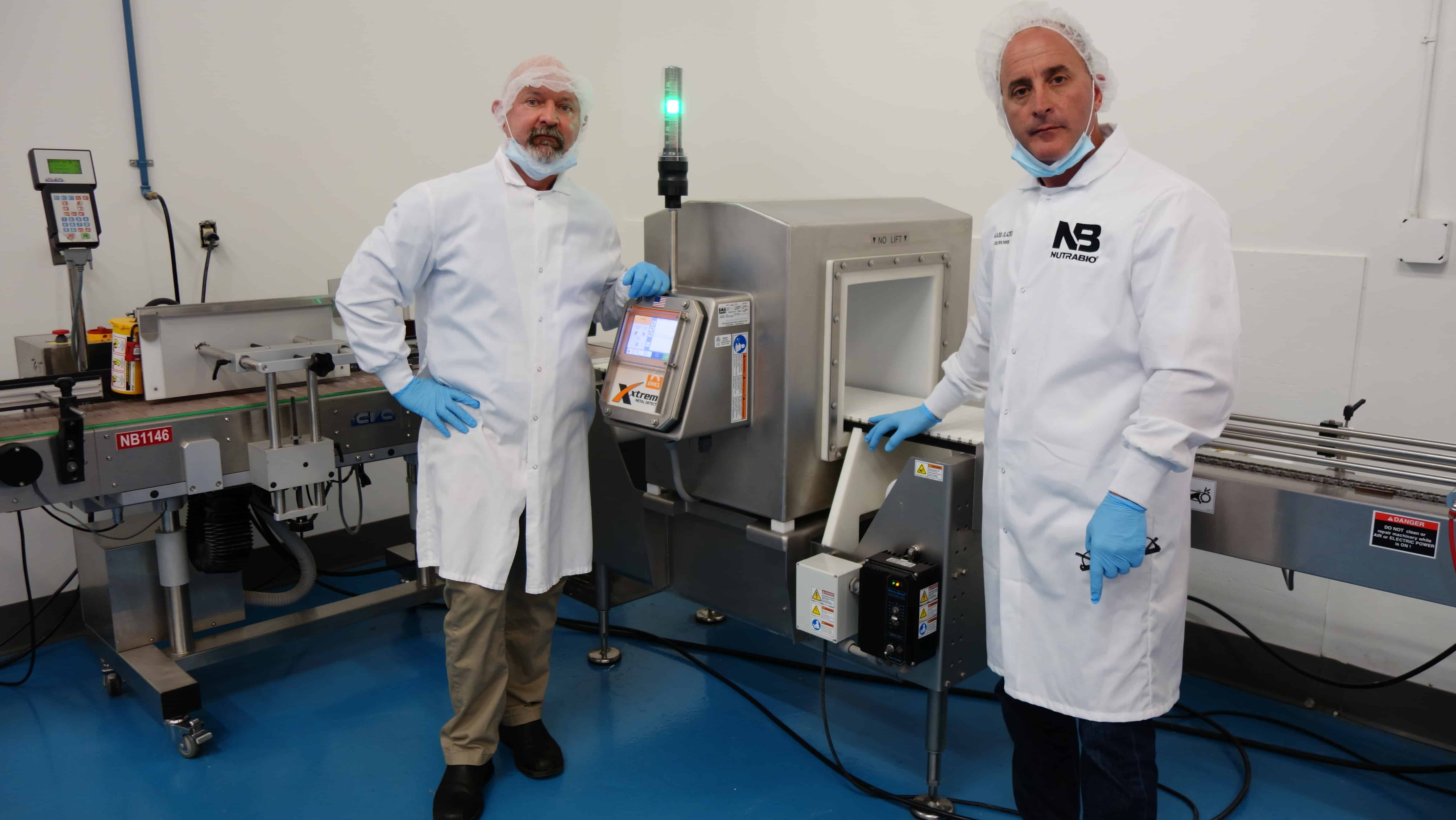The Truth about “Proprietary” Blends in Nutritional Supplements
Some of the more misleading marketing terms buyers have to deal with in an attempt to make informed decisions on the supplements they spend their hard earned money on are:
“Clinically proven”
“Patented”
“Doctor recommended”
“All natural”
“Scientifically formulated”
“Research proven”
“Used for thousands of years”
Readers interested in understanding why the above terms can be so misleading, can read my write-up on each of those terms in the free report found on this site.
In a nut shell, I went onto cover each of these common marketing terms that are used to sell supplements to unwitting consumers and explained each in detail as to what I view as their common misuse within the market place.
However, one term I didn’t cover, was “proprietary blend” which in many cases is the most potentially misleading term of them all, though not a term always seen in ads per se, but the side of the bottle.
Thus, why I felt it was a separate topic to be covered at a later date as it does not fit under the classic definition of a commonly used marketing term found in ads. I also decided to cover this term in a separate article as it requires much more space dedicated to it then the other terms needed for reasons that will be apparent shortly.
Proprietary blends are not inherently a negative for the consumer, though they are inherently confusing for the buyer in most cases.
A supplement that lists a “proprietary blend” on the bottle can be there for one of two reasons:
(a) to prevent the competition from knowing exactly what ratios and amounts of each ingredient present in the formula to prevent the competition from copying their formula exactly (commonly referred to as a ‘knock off’) or
(b) to hide the fact the formula contains very little of the active ingredients listed on the bottle in an attempt to fool consumers.
Sadly, the latter use is far more common then the former. They see a long list of seemingly impressive ingredients listed in the “proprietary blend” none of which are there is amounts that will have any effects. This is commonly referred to as “label decoration” by industry insiders. The former use of the term is a legitimate way for a company of a quality formula from having the competition copy or “knock off” their formula and the latter use of the term is to scam people.
So how does the consumer tell the difference?
They can’t, or at least they can’t without some research and knowledge, which the scam artists know few people have the time and energy to dedicate to finding the answers. Although there are a few tips the consumer can use to decide if a product with a “proprietary blend” is worth trying, no one, not even me, can figure out exactly how much of each ingredient is in the blend or in what ratio of each is contained within the formula, hence why the honest and not-so-honest companies employ “proprietary blends” so often….
…Thus, we have something of a conundrum here and conflict between a company making a quality formula attempting to protect that formula from other companies vs. the company simply looking to baffle buyers with BS.
There are at least some basic tips or food for thought here regarding this problem. A formula that contains say 10 ingredients in a “proprietary blend” is by no means defacto superior then one with three ingredients in it. It’s the dose that matters. Clearly, it’s better to have higher amounts of ingredients that will have some effects vs. a long list of ingredients in doses too low to have any effects.
Some times it helps to look at both what’s in the blend and how much of the blend actually exists. As an example, if say the blend is 300mg total and contains ten ingredients, that’s only 30mg per ingredient, assuming (and you know what they say about assuming!) that each is found in equal amounts.
Clearly, for most compounds out there, 30mg wont do jack sh*&. On the other hand, if say the blend is 3000mg (3 grams) and contains three or four ingredients, there is at least a better chance that the formula contains enough of each (and remember, we can’t tell how much of each is in there as that information is “proprietary”) to have some effects you are looking for such as an increase in strength, or a decrease in bodyfat, etc.
Unfortunately, the above examples are so vague as to be close to worthless as it’s easy enough to formulate a 3000mg blend where all the ingredients are worthless to begin with or a 300mg blend that contains compounds that only require small doses to have an effect and or can be toxic at higher doses.
For example, the mineral zinc tends to be no more then 30mg in most formulas and no more is needed or recommended. Much of this comes down to the consumer knowing what the various ingredients are and how they work (to decide if they are even worth using in the first place) then deciding if said blend appears to at least contain a dose that would have the desired effects, which just brings us back to my prior comment: most people have neither the time or inclination to research all that info just to decide if they want to use a product and thus the many “proprietary blends” on the market that are no more then a long list of under-dosed ingredients.
Wish I could be of more help giving specific advice to readers of this here article as to what makes a good blend and what constitutes a poorly made blend, but the above advice is the best I can do under the circumstances. Although a “proprietary blend” is not by default a negative to the consumer, it is by all means the poster child for the well-known Latin term Caveat emptor which translates into English as “let the buyer beware”.
Will Brink is the owner of the Brinkzone Blog. Will has over 30 years experience as a respected author, columnist and consultant, to the supplement, fitness, bodybuilding, and weight loss industry and has been extensively published. Will graduated from Harvard University with a concentration in the natural sciences, and is a consultant to major supplement, dairy, and pharmaceutical companies.
His often ground breaking articles can be found in publications such as Lets Live, Muscle Media 2000, MuscleMag International, The Life Extension Magazine, Muscle n Fitness, Inside Karate, Exercise For Men Only, Body International, Power, Oxygen, Penthouse, Women’s World and The Townsend Letter For Doctors.
He’s also been published in peer reviewed journals.
Will is the author of the popular e-books, both accompanied by private members forum access , Bodybuilding Revealed & Fat Loss Revealed.
You can also buy Will’s other books on Amazon, Apple iBook, and Barnes and Noble.







If you would like to take your Internet marketing career to the next level, you have got to have a look at a forum that has just been opened to the general public. We teach Underground Internet marketing techniques only found in Paid; High Dollar, Black Hat Internet marketing forums. If you are ready to discover things you have probably never thought about, come and take a look! Hope to hear from you soon!
I love this case. I bought mine right after I bought my iPad. I personally love the look and feel o f carrying a moleskin type case for my iPad. I”ve recommended this item to everyone I know with an iPad and they love it.When you install it and create an album, or move it over to another one, when you sync it back to your computer, does iPhoto see and accept this change, or does it break it back to what it was before this app changed it?Wow I can”t believe that you all didn”t know you can download this on your PC or Mac and then sync to a 4.x iPad. I did and have been playing it all weekend. The control system makes this better suited to a large screen.
Nice info it was really helpfull
Can a supplement have other ingredients in it other then what is listed on the bottle?
I purchased a bottle of Raspberry Ketones with added ingrediants such as African Mango, Green Tea and L-Carnitine. On the lable it states 500 mg. for the Raspberry ketone and900 mg. for Proprietary Blend. I hope I did not throw my money away on this product. Do you have any advice as to weather or not this is a good product?
Thank You I have researched this subject “propietory blend” as I ran into this today for the first time actualy and had to find out what it meant. And compared one product with propietory blend with 2.4mg with 5 ingredents to another product with the same ingredients plus.and each ingredient listed the amount of mg’s.
i have tendon problem and i have 2 different brands here and i just would like to know which one would be the better one
Thank you for informing customers, me as well, of this fact concerning the deception I find in many products on the market and their producers.
I’m drinking a green green coffee extract .800mg green coffee and 49 percent chlorogenic acid how do I know which one is good for me.
Will
If a competing conpany wanted to, could they hire a researcher to analyze the Proprietary Blend Product and determine what, and how much of a particular ingredient is in the product. It would be expensive, and all are basicly generic, but I have known this to be done in other areas.
General answer is yes, that could be done. Not really worth doing however.
Thanks Will
Did not expect an answer so quick. Your article on PBP is great!
I see 10 ingredients listed on the bottle of Xango Juice; a proprietary blend; have been told it cures everything from cancer to high blood pressure. Have found this product in health food stores; same thing; proprietary blend; also found another one that says it is 100% Mangosteen; no proprietary blend. Can anyone help me out on this product.?
Seriously people, either you can’t seem to understand english or you’ve deliberately decided to not use your intelligence, it’s free by the way. All companies are here to make profit, some are dishonest, some are honest, while others are in between. Unless there is a database somewhere on the net (& even then, if that database exists, can it be trusted?) you can never be completely sure of the unmentioned side-effects a product will influence. So the best way to go about this is first and foremost, talk to at least two doctors – to get a second opinion – and if they recommend it based on your family history of pathologies – if any – then you could go ahead and try by trial and error. Don’t buy into the hype and buy the large version of a product, no matter what they say. Buy the smallest version and see how your body reacts, coupled with the necessary exercise and diet of course. If the side effects significantly alter your day cease from using it. Here’s the bottom line: if, after proper exercise, diet and small dosage you aren’t seeing any positive difference, then it simply means this product doesn’t work on you – not that it doesn’t deliver, but it doesn’t work on your body. Think of it this way, it’s like those fitness informercials – they always mention at the bottom of the screen: Results may vary, so think about it – don’t badmouth a product just because it didn’t work on you, find the one which does.
All supplement companies are required by the FDA to state that their product is not intended to treat, cure or prevent disease, so pay attention to the label. Secondly, use your smarts! If a supplement would ever be able to cure cancer, wouldn’t it be sold to pharmaceutical companies first and then they would charge lots of dough for people to get the cure? Even if you would find a cure for cancer (and mind you, there’s more than one type out there) wouldn’t you try to get rich with your ”cure”? Nah, you would just sell it in natural health stores and supermarkets where everybody could get it for a low price, right? If your answer’s yes, then you should never get into business.
Hi Will, thanks for the info re: prpriety blends…ever heard from a company ….florapetnaturals ? I am interested in their mange control and plea,tick and mites control….I wrote them and they replied that they could not tell me what is in these products because it is a …propriorty blend and bound by “non disclosure agreements” thanks for your help
Really, well, I want you to know it is no “picnic” from where I stand either. I am trying to create a label
for my supplement “wellotonin” and the FDA regulates and restricts the words we can use on our labels.
I am not even allowed to use the word “Serotonin”, and other words that would be more meaningful and provide far more detailed explanation. I am sitting here, just racking my head trying to understand the unteen rules that need to be adhered to when creating supplement labels. So, there you go.
Have you written such labels before? You might want to consider working with someone who has written labels, which takes a science knowledge, regulatory knowledge, and writing skills.